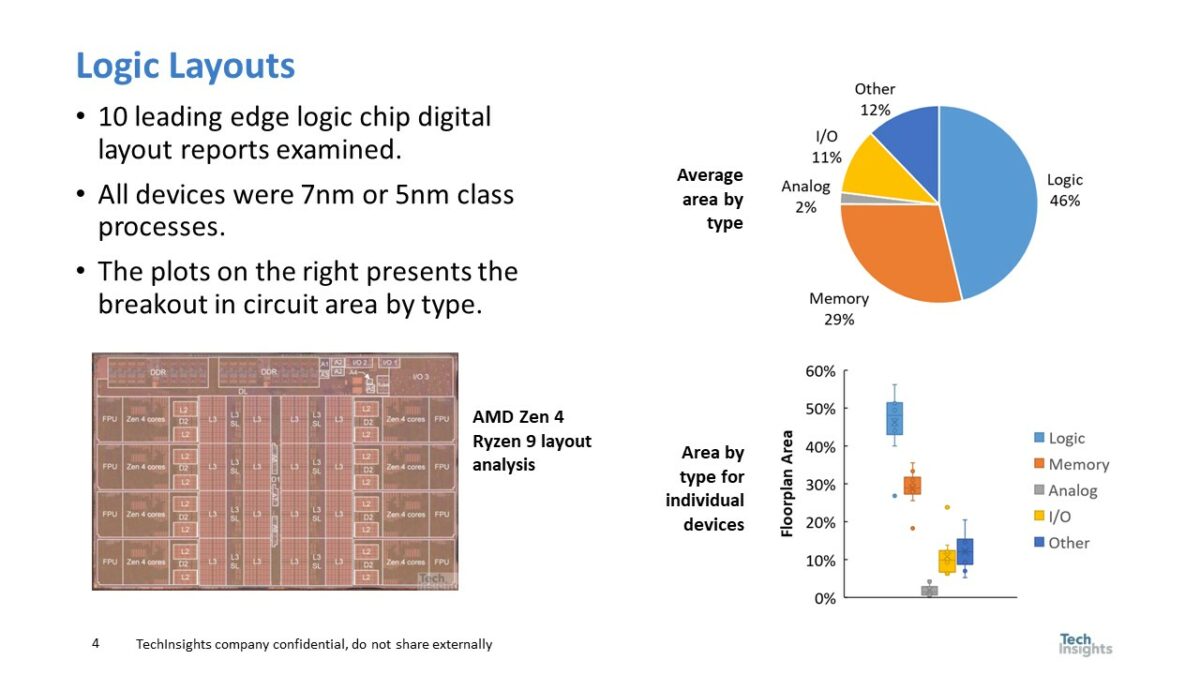As many on this forum are aware, maximum theoretical logic density is often calculated by taking the (M2 pitch) X (M2 tracks for a four transistor NAND gate) X (CPP). From there we try to use correction factors to account any boundary scaling (for example Scotten using 10% area reduction from going to SDB from DDB, as xDB doesn't show up on the level of individual cells) and uHD SRAM bit density.
With the advent of mixed row logic libraries, I think it best if we decide what methodology we want to use for measuring the cell height of mixed row libraries.
Using N3B as our example case (since to my knowledge that is the first node to ever try mixed row); we could either do a geo mean of the CHs for the 2-1 lib or use the CH of the 2 fin lib. I do not think using the CH for the 1 fin device makes any sense since it only has like 3 M0 tracks and is incapable of making logic circuits without siphoning off wiring resources from nearby 2 fin devices. Conversely we could only use the 2 fin device, with the caveat that you can go denser if you use "finFLEX" (in a similar manner to the correction factors applied for SDB). However I feel that it would be easier to go with the geo mean method as we won't need to muck around trying to compute what a good correction factor for different nodes and or products would be.
Any and all additional thoughts and discussions are welcome!
With the advent of mixed row logic libraries, I think it best if we decide what methodology we want to use for measuring the cell height of mixed row libraries.
Using N3B as our example case (since to my knowledge that is the first node to ever try mixed row); we could either do a geo mean of the CHs for the 2-1 lib or use the CH of the 2 fin lib. I do not think using the CH for the 1 fin device makes any sense since it only has like 3 M0 tracks and is incapable of making logic circuits without siphoning off wiring resources from nearby 2 fin devices. Conversely we could only use the 2 fin device, with the caveat that you can go denser if you use "finFLEX" (in a similar manner to the correction factors applied for SDB). However I feel that it would be easier to go with the geo mean method as we won't need to muck around trying to compute what a good correction factor for different nodes and or products would be.
Any and all additional thoughts and discussions are welcome!


